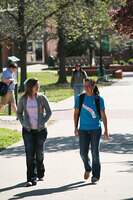ACT Services for Scores 20-23
ACT Score Range 20-23
Students who score in the range 20-23 are likely to know and to be able to do:
English
Students can identify the main theme or topic of a straightforward piece of writing. They are able to add a sentence that introduces a simple paragraph and to decide the most logical place to add a sentence in an essay. They can use a conjunctive adverb or phrase to express a straightforward logical relationship. They can eliminate details that clearly violate the focus of the essay and revise material to make the writing less clumsy and more concise. They can use the word or phrase most appropriate in terms of the context and tone of a fairly straightforward essay. Students are able to recognize and to correct marked disturbances of sentence flow and structure (such as misplaced modifiers) and to determine the clearest and most logical conjunction to link clauses. They identify the past and past participle forms of irregular but commonly used verbs and identify idiomatically appropriate prepositions in terms of their context. They can ensure that a verb agrees with its subject when there is some text between the two, use commas to set off basic parenthetical phrases, and delete unnecessary commas when a incomplete or incorrect reading of the sentence suggests a pause that should be punctuated.
Reading
Students can grasp the important components of uncomplicated literary narratives and informational passages. They respond with increasing confidence to factual questions in informational passages. They can identify comparative relationships between ideas and characters, and can identify clearly stated cause-effect relationships found in uncomplicated texts. They are able to order simple sequences of events in uncomplicated literary narratives. They also draw simple conclusions using details that support the main idea of more challenging passages. They locate important details and are beginning to use context clues to define words in uncomplicated passages. These students demonstrate some reasoning skills, evident in their ability to make simple generalizations about characters and about the author's attitude toward his or her subject in uncomplicated passages.
Mathematics
Students can solve routine two-step and three-step arithmetic problems, such as rate and proportion problems, multi-step percent problems (e.g., tax added and percentage off), and average problems (e.g., computing with negative integers or using a given average); and exhibit knowledge of elementary number concepts including the ordering of decimals, pattern identification, absolute value, primes, and greatest common factor. In probability, statistics, and data analysis, these students can translate from one representation of data to another (e.g., a bar graph to a circle graph); can determine the probability of a simple event; and exhibit knowledge of simple counting techniques. In algebra, they can manipulate basic algebraic expressions (e.g., substitute integers for unknown quantities, add and subtract simple algebraic expressions, multiply two binomials, and perform straightforward word-to-symbol translations); and solve most first-degree equations. In coordinate geometry, they comprehend the concept of length on the number line; can locate points in the coordinate plane; exhibit knowledge of vertical and horizontal lines and of their point of intersection; and exhibit knowledge of slope. In geometry, they exhibit knowledge of basic angle properties and special sums of angle measures (e.g., 180 degrees and 360 degrees); can compute the area and perimeter of triangles and rectangles when the problems are simple; and can use geometric formulas when all necessary information is given.
Science Reasoning
Students can select data from simple graphs (e.g., line graphs, bar graphs) and diagrams (e.g., carbon cycle, electrical circuits). They are able to identify pertinent data from a table with two variables and can also identify whether a relationship exists between two variables. When working with data, they can identify an inverse relationship between two variables. They can translate both written data and tabular data into graphic form. They understand basic lab procedures and can identify the control in an experiment or study.
Used with permission of ACT from "ACT, Information for Life's Transitions, Standards for Transitions: Descriptions of the Skills and Knowledge Associated with PLAN and ACT Assessment Scores", c1998

